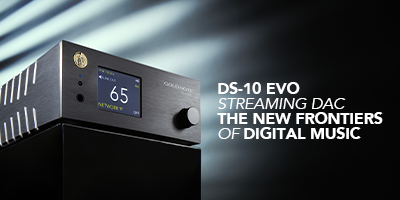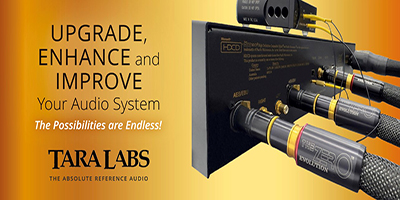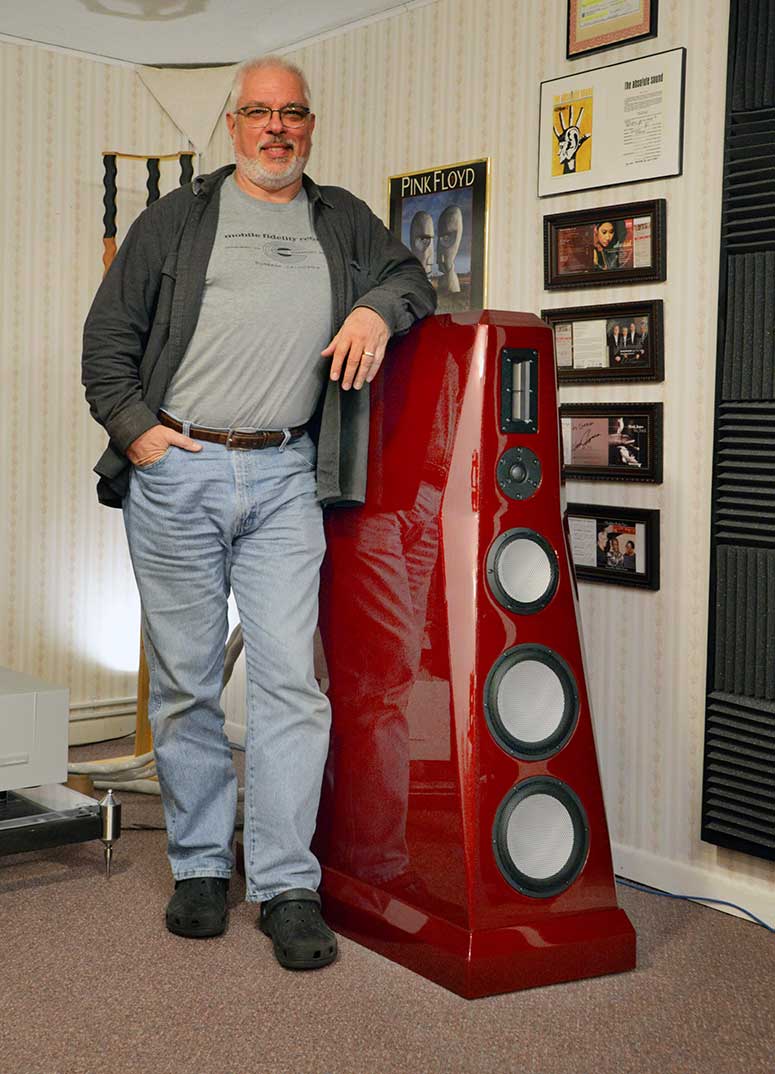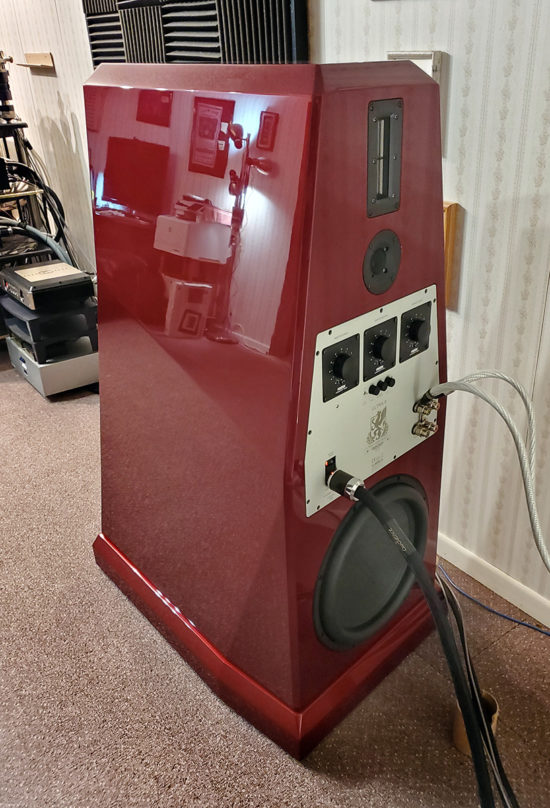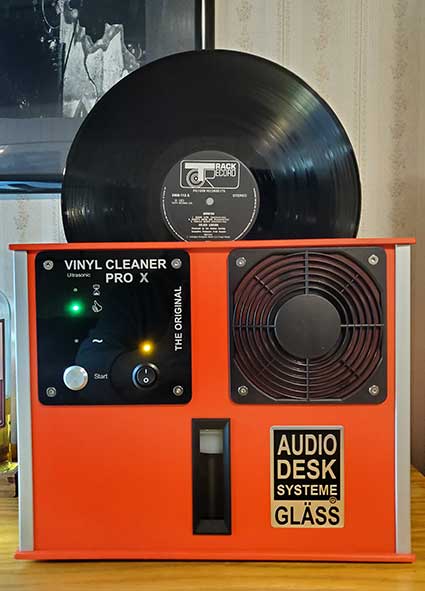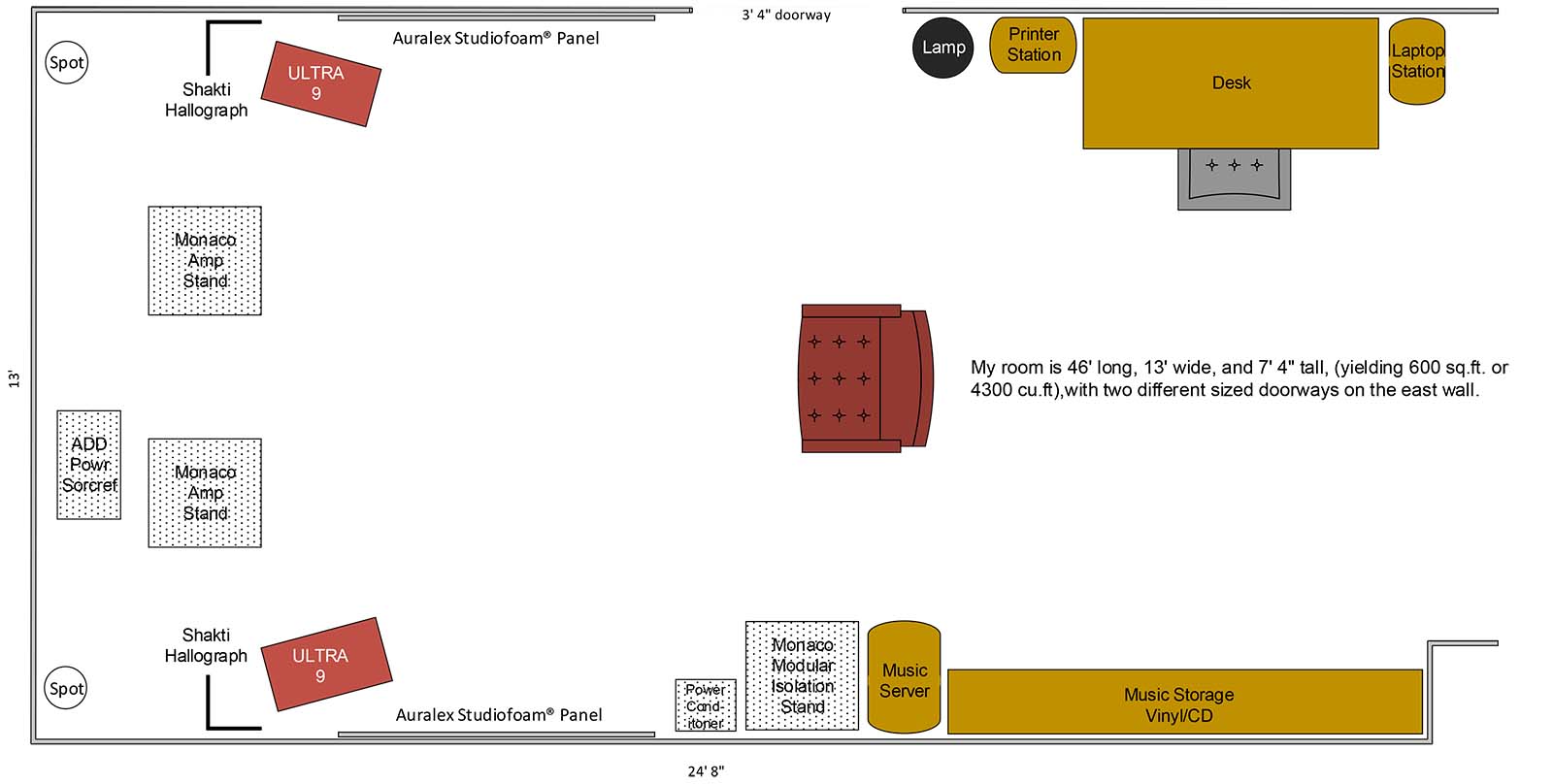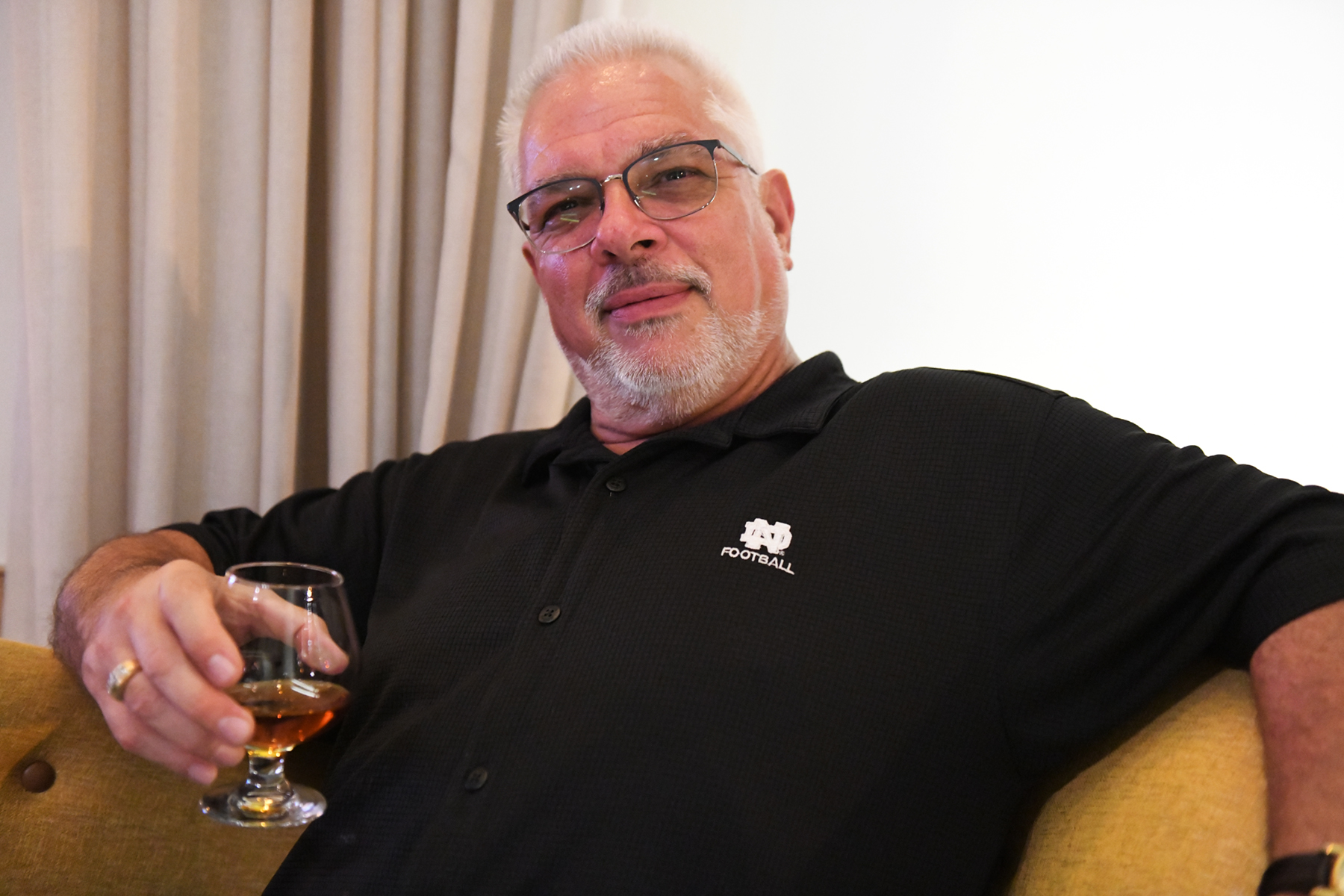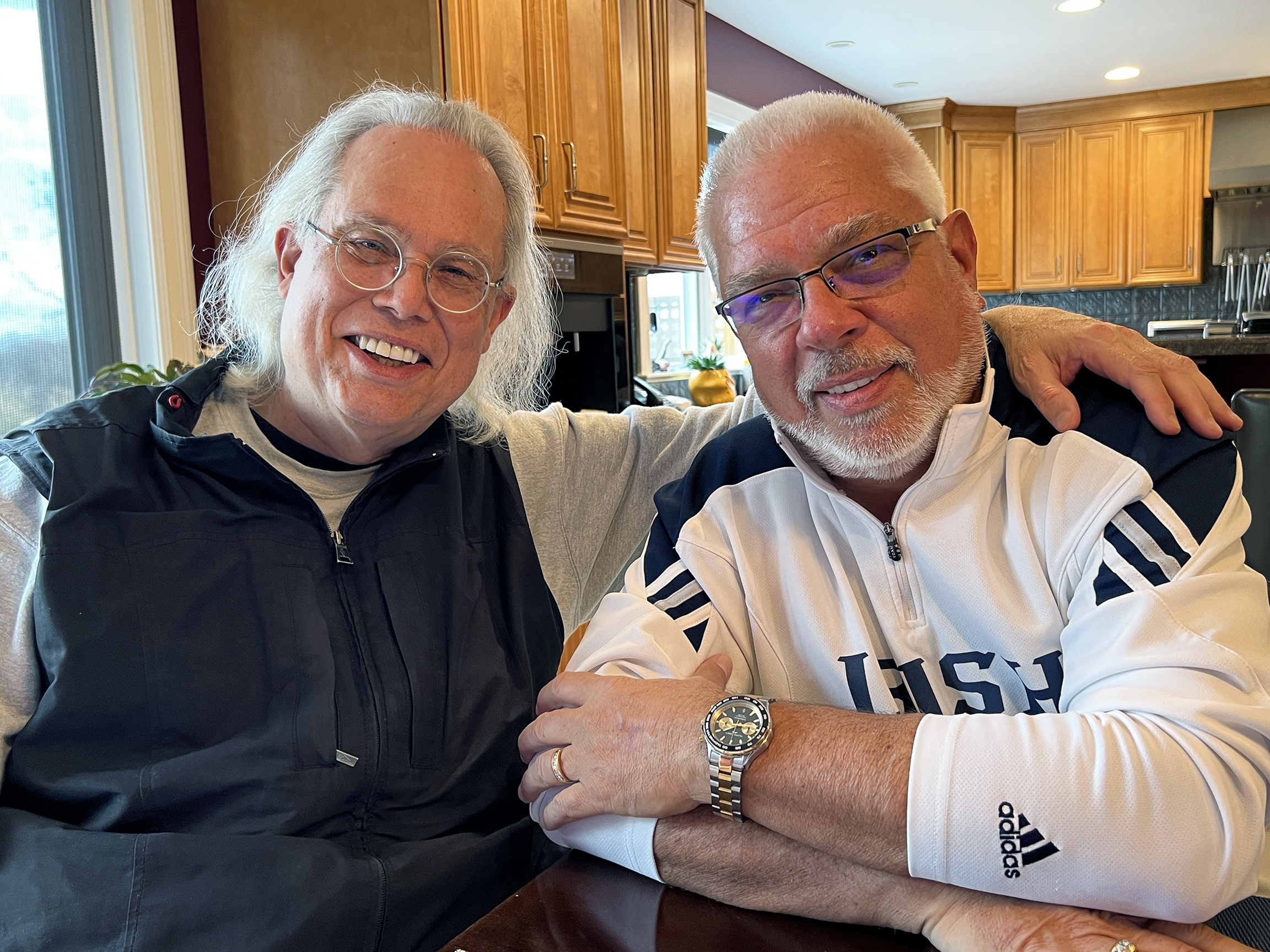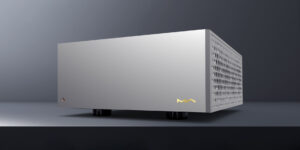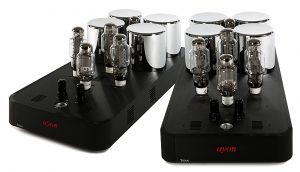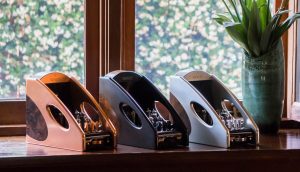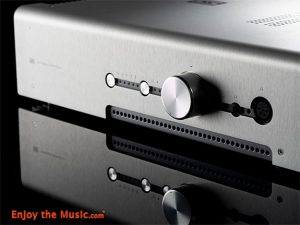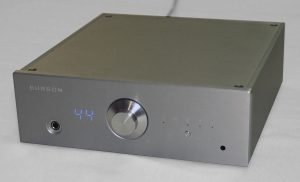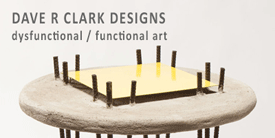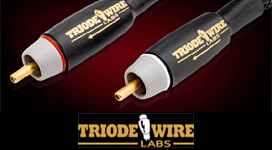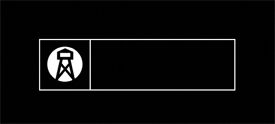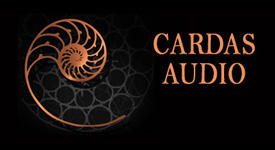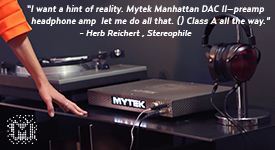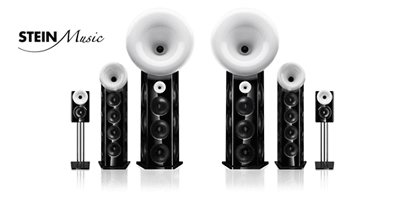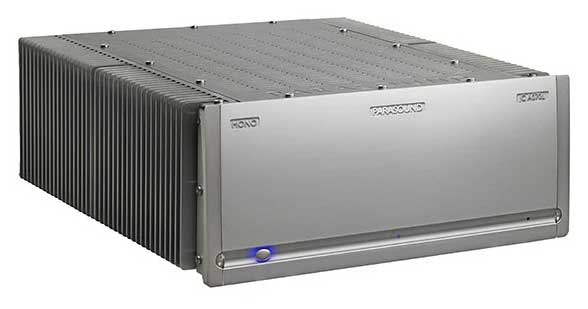
I first heard the now-acclaimed Parasound Halo JC1 amplifier during the January 2002 CES, though this soon-to-be-acclaimed amplifier was not officially available for purchase until March of 2003. But on that January day, the late Bob Crump had used four pre-production JC1s, a soon-to-be-acknowledged overachieving amplifier from renowned electronics designer John Curl, to drive a pair of Wisdom Audio M-50 loudspeakers to exceptional result.
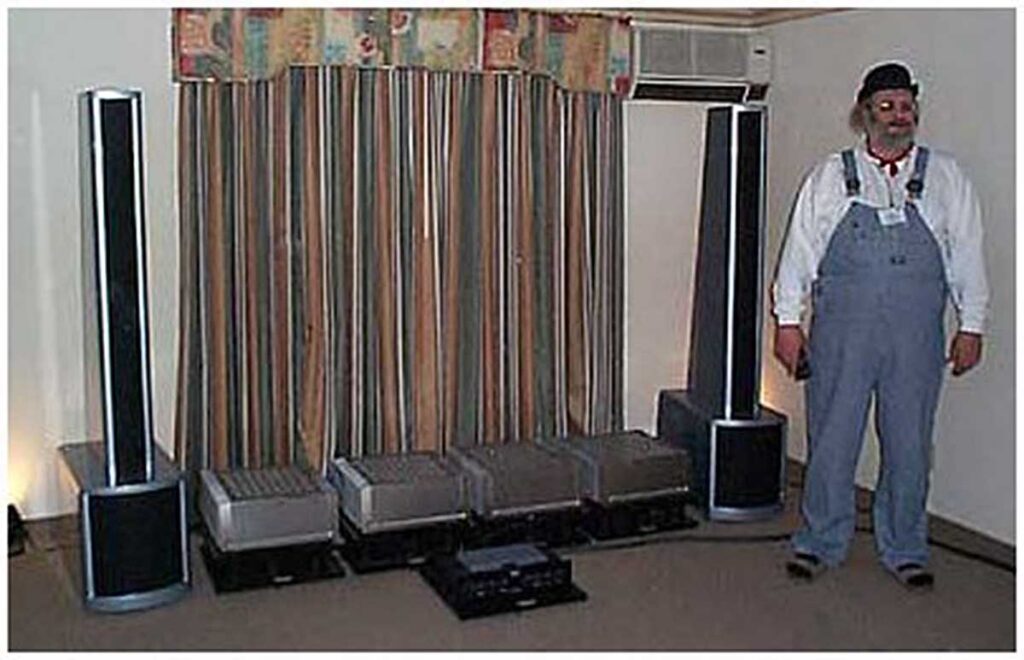
The late Bob Crump, showing four of the original prototypical Parasound HALO JC1 amplifiers at CES in January of 2002
I was then fortunate enough to have been granted the opportunity to publish the first review of the Parasound Halo JC1+, the long-awaited revision to its venerated and nearly legendary predecessor, the original JC1, when it was first released in Q1 of 2020. That review, The Parasound Halo JC 1+ Mono Amplifier, appeared in May of 2020, with Issue 109 of Positive Feedback (HERE).
When Parasound founder Richard Schram chose to retire at the end of two thousand twenty-two after some four decades, entrepreneur David Sherrif stepped in, mid-January of two thousand twenty-three, to take the reins. While David had no previous direct involvement in the consumer electronics industry, he had earned his Bachelor of Science degree in Engineering from the U.S. Air Force Academy in 1988, went on to become an A-10 Thunderbolt fighter pilot, and then made the successful transition into the business world in 1993.

David Sherrif - New Owner/CEO - Parasound

Darren Myers - Parasound's new lead designer
As David settled into his new role as the owner and CEO of Parasound, he was good enough to appear with me on my YouTube channel, twice, in March and April of 2023, to share his plan for this established, highly regarded and respected electronics manufacturer with fans and industry members alike.
Then, last October, with the release of my Episode 198: Revisiting the Parasound Halo JC1+ Amplifier, in which I reexamined this exceptional, and, by comparison to many other amplifiers that may consider themselves direct competitors, markedly affordable Parasound Halo JC1+, finding that it still represented both an overachievement and an excellent value.
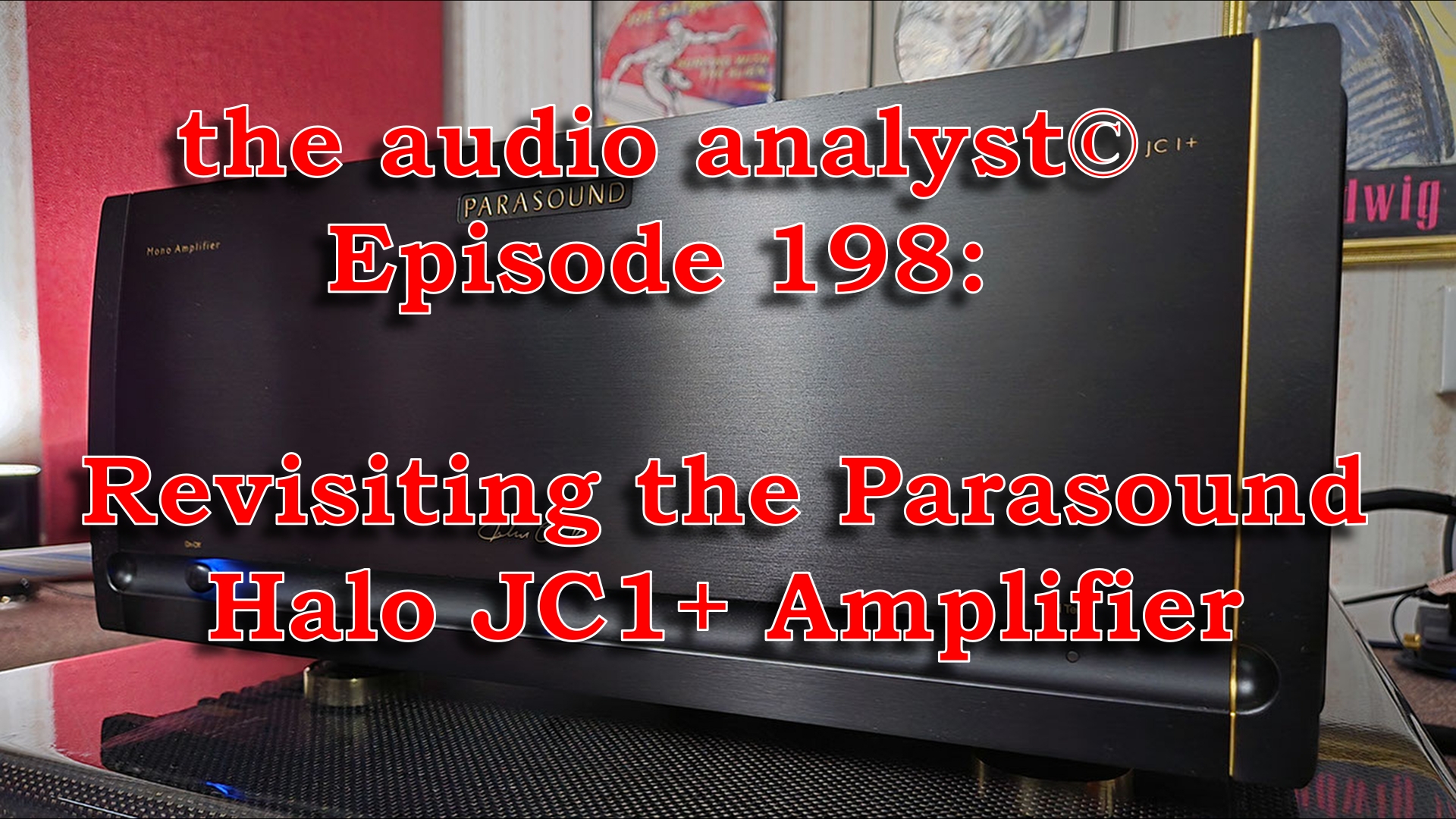
To my pleasant surprise, immediately after that episode dropped, David reached out to me to share some fascinating news. He had commissioned an enhanced version of the JC1+, an all-out, 100-watt, full class A version, to be called the JCA100 Tribute. The Tribute portion of its name was meant to honor both designer John Curl and its class of operation. As such, it would be a limited-edition, collector-grade product, with only one hundred pairs on offer, all assembled to order here in the US as sequentially numbered pairs. He added that other Tribute edition products, including a linestage and phonostage, would follow in time.
With the JCA100, not only would Parasound deliver a new, more sophisticated, more definitive 100-watt, pure Class A version of the already highly regarded JC1+ amplifier, but David also had other altruistic plans for the income their sale would generate. A portion of the JCA100's proceeds would be presented to John Curl, bolstering his retirement and financially rewarding his decades of groundbreaking and pioneering contributions to the field of circuit innovation and solid-state audio amplifier design, and in a meaningful way. Yet another portion of the amplifier's proceeds would be set aside to seed a scholarship fund for aspiring audio designers and future repair technicians, a much needed, dwindling breed.
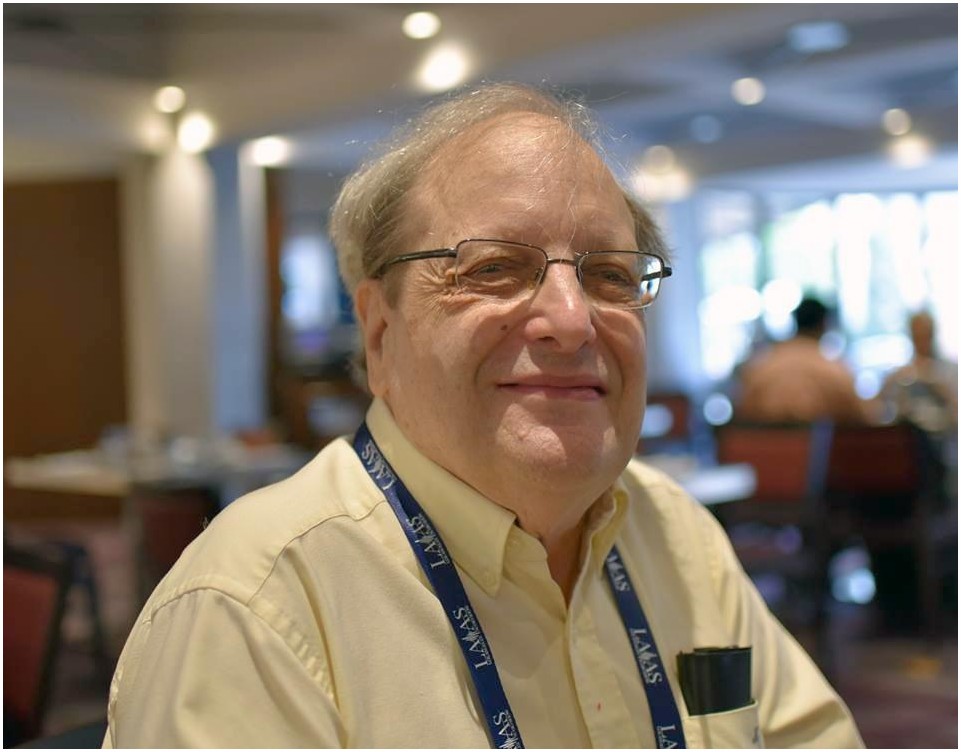
John Curl - Legendary solid-state audio amplifier designer
Meant as a tribute to Class A operation, the JAC100 would essentially be a reimagined, high-bias JC1+ derivative. Throughout my conversations with David, he explained that while they not only honestly felt that the JC1+ circuitry was first-rate, but that committing major changes to its winning design would risk altering its sonic signature more than they might be comfortable with. And as the design developed, physically, he pointed out that they found the big lift in its realization to be the transformer.
With all else being equal, the primary difference in requirements for a power transformer used for Class A amplifiers from those used in Class A/B amplifiers lies in their current delivery capacity and heat dissipation capabilities. With Class A amplifiers, because the output transistors conduct across the entire 360 degrees of the input signal cycle, even when idle, they require a power transformer that can deliver a higher, continuous current draw. This necessitates a power transformer that can supply this continuous high current without overheating or suffering voltage drops.
Further, in an effort to both optimize and balance the necessarily higher biasing scheme for its Class A operation and the corresponding heat dissipation, while it would impact the overall output power, they felt the best performance would be obtained by lowering the rail voltage on the output stage.
"Rail voltage" describes the reference voltage levels available from the power supply, the positive and negative DC supply voltages. "Rail-to-rail output" describes the output voltage swing from the negative supply rail to the positive supply rail, which effectively establishes the usable voltage range and determines the limits of the output signal.
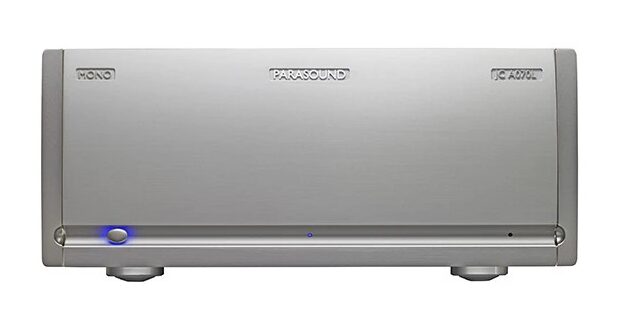
Once these considerations were addressed, the next phase involved considerable time spent on both extended AP testing and careful long-term biasing. This prolonged acceptance testing period was crucial to distilling the JCA100 Tribute's final overall performance, ensuring that it would be dependable, robust, and ultimately meet or exceed its long-term design goals.
Where the JA1+ offers 450 watts into an 8-ohm load, or some 850 watts into 4 ohms, the changes and refinements made to accomplish the new JAC100 Tribute set its limits at 100 watts into an 8-ohm load, or 200 watts into 4!
The JCA100 Tribute matches the JC1+ in nearly every regard, including dimensions, weight, number and variety of inputs and outputs, and every selectable option. You may see those particulars at the Parasound website.
In response to my direct questions about specific changes, David confessed that their obsessive development process had led them to land on a set of power supply and transformer alterations that required only a single small resistor change at the board level.
Further, there was one more detail that caught my attention. While the Tribute was created as a pure Class A device, it also includes the same Bias toggle switch on its rear panel as the JC1+. When I inquired as to why a pure Class A amplifier would need such a switch, David said that with the switch in the Normal position, the JCA100 runs in its full Class A operational mode. However, selecting the Low setting results in delivering just the first 15 watts in Class A operation. I must admit to finding this option puzzling. While David explained that this option affords owners a cooler-running option, for background sessions or less critical listening, I suspect that, because the choice is an integrated component of the JC1+, it would be otherwise impossible to bypass or remove it from the JCA100 Tribute.
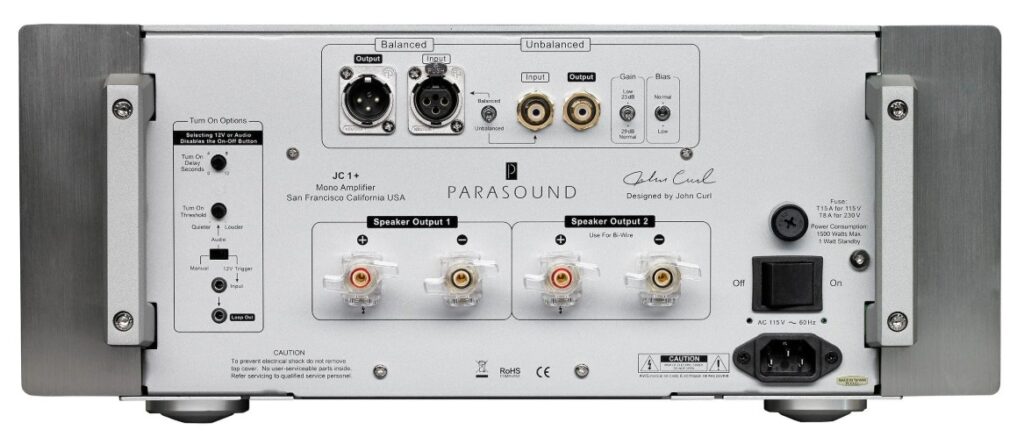
When I first learned that the JCA100s had shipped, I dropped my Halo JC1+ monos back into play, replacing my reference True Life Audio SSA-350 monoblocks, resting on a pair of Grand Prix Audio Monaco Isolation Stands with formula shelves. My goal was to be fully refamiliarized with their sonic signature before my time with the JCA100s was to begin.
After several days of run-in, settle time, and getting reacquainted with their engaging voice, once the JCA100s arrived, they immediately replaced the JC1+ monoblocks on the Grand Prix Audio isolation stands. I made sure that they were configured with their Gain set to Normal, their maximum of 29 dB, and that the curious Bias switch was set to Normal, ensuring their full, pure Class A operation. As is my standard procedure, I gave them some time to run in and settle before starting my evaluation. And once I did, I was quite impressed with how closely they mirrored the voicing of my JC1+ monoblocks.
Both of these exceptional Parasound amplifiers deliver remarkably authoritative, impactful, and defined bass, with richly rendered, vibrant midrange tone, offering smooth, crisp, agile upper register performance. Both deliver an impressive representation of the body of instruments and voices, as well as an undeniably natural presentation of their bloom, space, and texture. And both are quite resolute, which positively reflects on their resultant transparency.
But over the first two weeks, as the JCA100 Tributes settled and ran in, I was able to note some conspicuous refinement in areas where the JC1+monoblocks was a bit more remiss, or reticent. While the JC1+ monoblocks offer an impressive degree of overall openness, a generally smooth and relaxed, highly natural presentation, the JCA100 Tributes have taken these attributes to new heights, developing a notably more expressive nature, with remarkable neutrality, delivering a more polished sense of engagement.
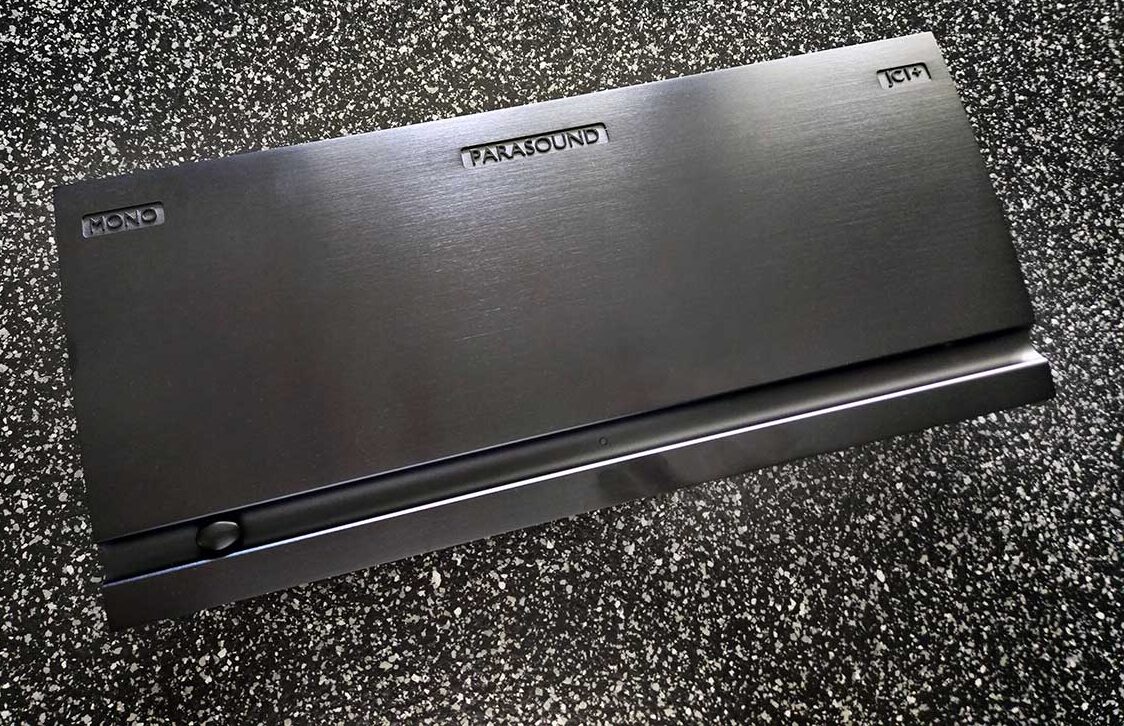
With further listening, the fact that I repeatedly felt more drawn into the way the JCA100 Tributes depicted the location, size, and spatial interrelationships of individual instrumental voices was significant. This refined presentation carried over to their ability to form more explicit and accomplished layering, providing greater clarity and specificity to the individual contributions of instruments, especially in massed arrangements.
At this point in my evaluation, using a shotgun bi-wire configuration with two pairs of Silversmith Audio Fidelium ribbon loudspeaker cables to drive my Von Schweikert Audio ULTRA.nine loudspeakers, with their 4-ohm nominal impedance and 92 dB sensitivity, I found myself wondering if the JCA100 Tribute's maximum output of 200 watts may have been in any way constraining the ULTRA.nines customary effortless, unrestricted dynamic expressiveness.
Which takes us to the next level of this evaluation. When David and I first discussed my having the opportunity to experience the JCA100 Tributes in my system, we also discussed exploring the potential of bi-amplifying my speakers, using my more powerful JC1+ monoblocks to drive the woofer/subwoofer section, and the JCA100's to drive the midrange/treble/ambience retrieval array section of my ULTRA.nines.
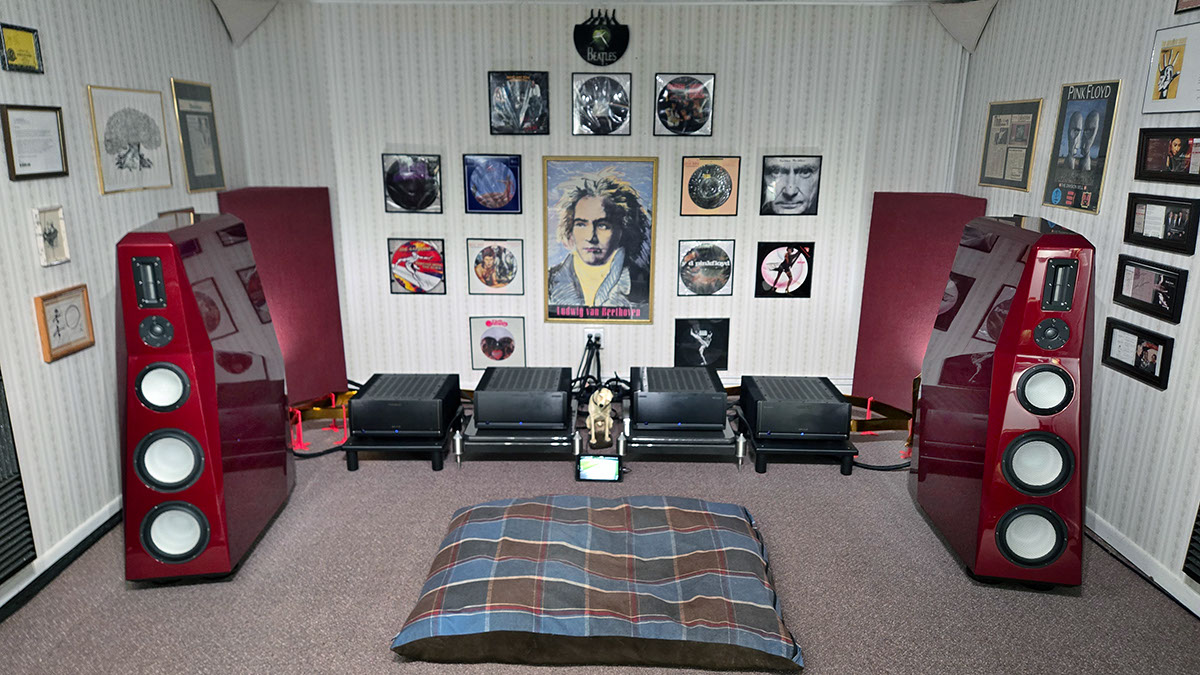
So, after installing a second set of considerably more affordable amplifier stands, I placed the JC1+ monoblocks on them, just outside the stands supporting the JCA100 Tributes. Using one set of the Fidelium loudspeaker cables per amplifier, with the JCA100's powering only the upper frequency and ambience retrieval arrays, and the JC1+ monoblocks to drive the lower frequency sections of my ULTRA.nines, I leveraged the native "throughput" XLR jacks on the rear panel of the JCA100s to feed the input signal on to the JC1+ monoblocks. Further, to assure the most effective pairing with the JCA100 Tributes, I made sure that the JC1+ monoblocks' Bias switch was set to High, delivering the first 25 watts of power in Class A. And with some comparative listening, I settled on setting the Gain switch to the Low, or 23 dB setting.
As you might expect, when implementing vertical bi-amplification, especially with loudspeakers intended to be bi-wired or bi-amplified, the results were not merely better, they were something rather exceptional. This leveraged implementation of both sets of these remarkable Parasound monoblock amplifiers was remarkably engaging, with clear gains delivered as elevated clarity, detail, and resolution, immediately apparent.
The foundational performance of the bottom-most registers, especially down into the lowest two octaves, was nearly as well rendered as I've ever experienced in my room. This system's ability to convey bass weight and slam, to render concussive impact while maintaining a detailed and articulate rendering of this bandwidth, was exceptional.
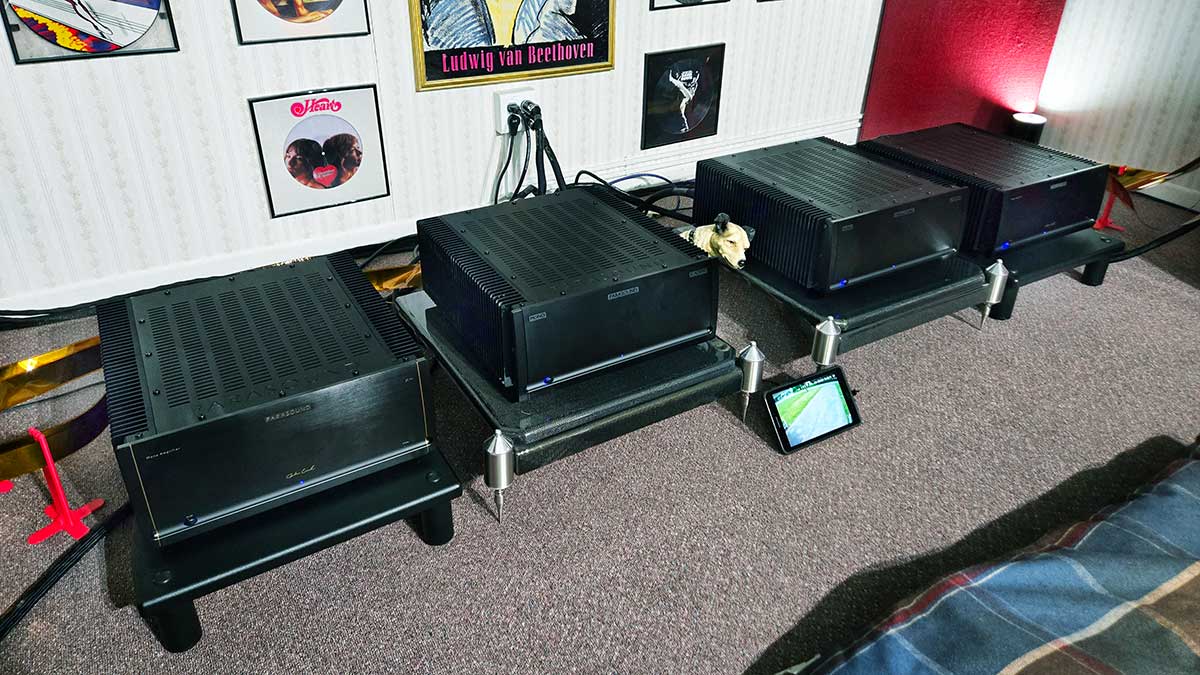
Fundamental instrumental tonality and color were exceptionally faithfully rendered, with compelling and poised realism. Their ability to recreate engagingly smooth, fluid, articulate, and expressive midrange, their steadfast accuracy of tonality, was among the first attributes to garner my attention with this combination. Tonal colors were not only unquestionably life-like, but they were also regenerated with the refined subtleties and textures for which Class A amplification is so rightfully renowned.
While the JC1+ monoblocks' treble is delicately detailed, pleasantly resolute, open, and delivers good sparkle and shimmer for its class, I have found it to be somewhat wanting, particularly when it comes to the development of the full measure of effortlessness and ease available from today's finest amplifiers.
With the JCA100 Tributes now freed from the duties of reproducing any information below 250Hz, treble performance, while not necessarily more extended, was rendered in a more airy and resolute way, giving the system a more graceful, spatial, effortlessness, one that more closely approached that unfettered extension that allows listeners to perceive the air and space of and around instruments more subliminally and naturally.
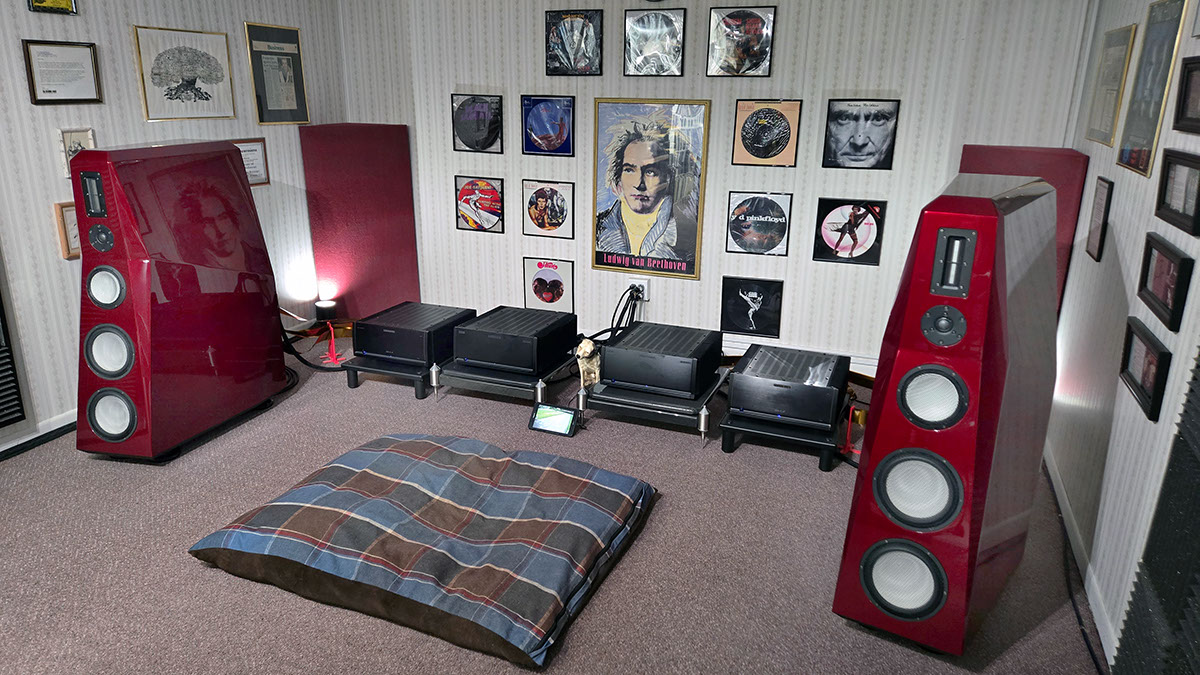
Another reward realized by liberating the JCA100 Tributes of their duties of reproducing the power range and the lowest three-and-a-half to four octaves was the improvement it also brought to macrodynamic expression and musical scaling. Not only did this pairing have the power, resolution, and transient speed to recreate remarkable dynamic events and the realistic scaling of the most demanding of musical passages, but it also brought a similarly enhanced degree of definition and expressiveness to microdynamic passages as well.
Another area where this knock-out Parasound combo really excelled was in its ability to render the space between, and the corporal interrelationships of, instrumental positions and locations. Staging and imaging cues were portrayed with an uncannily realistic sense of size and localization.
To my ears, the JCA100 Tributes boldly exemplifies what the Parasound brand has represented since its founding in 1981, as an unassuming product capable of delivering demandingly high-performance without unnecessary frills, one that confidently and comfortably steps aside, clearing the path to allow the music to take center stage.
Conclusion
In closing, I find the JCA100 Tributes to be the crowning achievement in Parasound's now storied list of accomplishments. Its overall tonal balance is exceptionally evenhanded, offering radiant, lifelike tone color and full, dense textures. Its ability to render markedly authentic timbre, instrumental bloom and body, bursting with dynamism and attack, all add up to an exceptional level of performance, making it arguably the most significant accomplishment in Parasound's nearly forty-five year history.
And when augmented by the contributions of the more affordable, yet similarly overachieving JC1+ monoblocks when used to build a single brand, vertically bi-amped configuration, their blended performance encroaches upon the sonic accomplishments possible from the finest amplifiers available today.
Keep your eyes, and ears, on Parasound!
JCA100 Tribute Power Amplifiers
Specifications
- Power Output (Class A)* - 100 watts @ 8 Ω / 200 watts @ 4 Ω
- Frequency Response - 2 Hz - 120 kHz, +0/-2 dB
- Total Harmonic Distortion (THD) - < 0.15 % at full power, < 0.02 % at typical listening levels
- TIM - Unmeasurable
Dimensions
- Width: 17.625" (448 mm)
- Height: 7.75" (197 mm), without feet: 7.125" (181 mm)
- Depth: 20" (508 mm), with cables: 21.5" (546 mm)
- Weight: Net: 83 lbs. (37.6 kg), Shipping: 100 lbs. (45.4 kg)
Retail: $30,000 per pair
https://parasound.com/products/jca100

